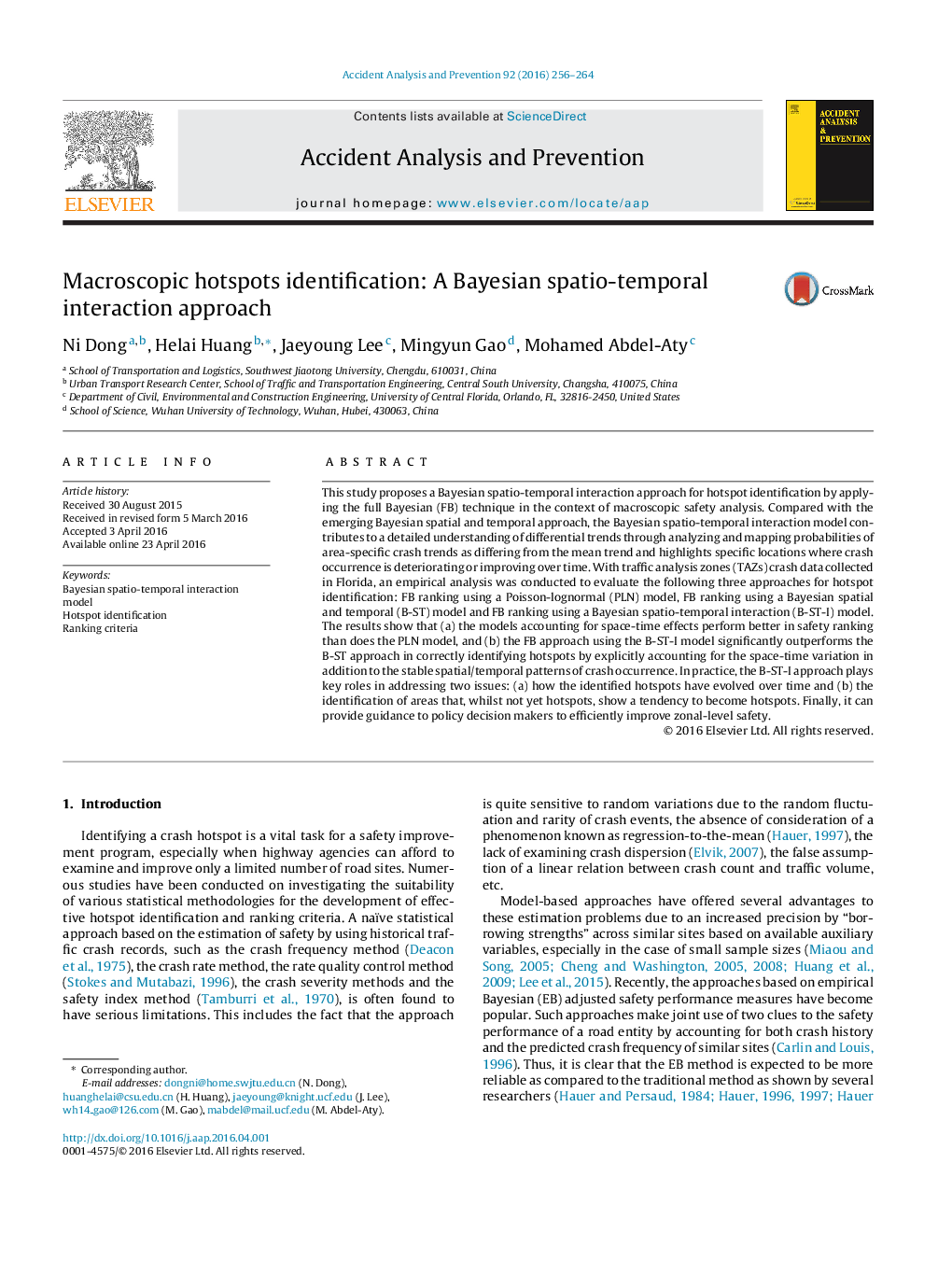| کد مقاله | کد نشریه | سال انتشار | مقاله انگلیسی | نسخه تمام متن |
|---|---|---|---|---|
| 572057 | 1452905 | 2016 | 9 صفحه PDF | دانلود رایگان |
• A Bayesian spatio-temporal interaction (B-ST-I) approach was developed for hotspot identification in the context of macroscopic safety analysis.
• Models accounting for space-time effects perform better in safety ranking than does the Poisson-lognormal model.
• The B-ST-I model significantly outperforms the Bayesian spatial and temporal model.
• The B-ST-I model provides insight into the processes influencing changing crash rates over time and efficiently improves zonal-level safety.
This study proposes a Bayesian spatio-temporal interaction approach for hotspot identification by applying the full Bayesian (FB) technique in the context of macroscopic safety analysis. Compared with the emerging Bayesian spatial and temporal approach, the Bayesian spatio-temporal interaction model contributes to a detailed understanding of differential trends through analyzing and mapping probabilities of area-specific crash trends as differing from the mean trend and highlights specific locations where crash occurrence is deteriorating or improving over time. With traffic analysis zones (TAZs) crash data collected in Florida, an empirical analysis was conducted to evaluate the following three approaches for hotspot identification: FB ranking using a Poisson-lognormal (PLN) model, FB ranking using a Bayesian spatial and temporal (B-ST) model and FB ranking using a Bayesian spatio-temporal interaction (B-ST-I) model. The results show that (a) the models accounting for space-time effects perform better in safety ranking than does the PLN model, and (b) the FB approach using the B-ST-I model significantly outperforms the B-ST approach in correctly identifying hotspots by explicitly accounting for the space-time variation in addition to the stable spatial/temporal patterns of crash occurrence. In practice, the B-ST-I approach plays key roles in addressing two issues: (a) how the identified hotspots have evolved over time and (b) the identification of areas that, whilst not yet hotspots, show a tendency to become hotspots. Finally, it can provide guidance to policy decision makers to efficiently improve zonal-level safety.
Journal: Accident Analysis & Prevention - Volume 92, July 2016, Pages 256–264
